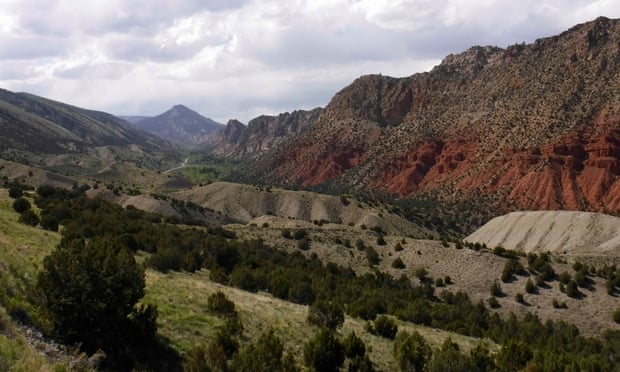
Earth has so far gone through five mass extinction events – scientists are worried we’re on course to trigger a sixth – and the deadliest one happened 252 million years ago at the end of the Permian geologic period. In this event, coined “the Great Dying,” over 90% of marine species and 70% of terrestrial vertebrate species went extinct. It took about 10 million years for life on Earth to recover from this catastrophic event.
Scientists have proposed a number of possible culprits responsible for this mass extinction, including an asteroid impact, mercury poisoning, a collapse of the ozone layer, and acid rain. Heavy volcanic activity in Siberia was suspected to play a key role in the end-Permian event.
Recently, geologist Dr Benjamin Burger identified a rock layer in Utah that he believed might have formed during the Permian and subsequent Triassic period that could shed light on the cause of the Great Dying.

Sheep Creek Valley, Utah. Photograph: Benjamin Burger
During the Permian, Earth’s continents were still combined as one Pangea, and modern day Utah was on the supercontinent’s west coast. Samples from the end-Permian have been collected from rock layers in Asia, near the volcanic eruptions, but Utah was on the other side of Pangaea. Burger’s samples could thus provide a unique perspective of what was happening on the other side of the world from the eruptions. Burger collected and analyzed samples from the rock layer, and documented the whole process in a fascinating video:
Burger’s samples painted a grim picture of Earth’s environment at the end of the Permian period. A sharp drop in calcium carbonate levels indicated that the oceans had become acidic. A similar decline in organic content matched up with the immense loss of life in the oceans during this period. The presence of pyrite pointed to an anoxic ocean (without oxygen), meaning the oceans were effectively one massive dead zone.
Bacteria ate the oversupply of dead bodies, producing hydrogen sulfide gas, creating a toxic atmosphere. The hydrogen sulfide oxidized in the atmosphere to form sulfur dioxide, creating acid rain, which killed much of the plant life on Earth. Elevated barium levels in the samples had likely been carried up from the ocean depths by a massive release of methane.
Levels of various metals in the rock samples were critical in identifying the culprit of this mass extinction event. As in end-Permian samples collected from other locations around the world, Burger didn’t find the kinds of rare metals that are associated with asteroid impacts. There simply isn’t evidence that an asteroid struck at the right time to cause the Great Dying.
However, Burger did find high levels of mercury and lead in his samples, coinciding with the end of the Permian period. Mercury has also been identified in end-Permian samples from other sites. Lead and mercury aren’t associated with volcanic ash, but they are a byproduct of burning coal. Burger also identified a shift from heavier carbon-13 to lighter carbon-12; the latter results from burning fossil fuels.
The Permian was the end of the Carboniferous period, which means “coal-bearing.” Many large coal deposits were created in the Carboniferous, including in Asia. Previous research has shown that the Permian mass extinction event didn’t coincide with the start of the Siberian volcanic eruptions and lava flows, but rather 300,000 years later. That’s when the lava began to inject as sheets of magma underground, where Burger’s data suggests it ignited coal deposits.
The coal ignition triggered the series of events that led to Earth’s worst mass extinction. Its sulfur emissions created the acid rain that killed forests. Its carbon emissions acidified the oceans and warmed the planet, killing most marine life. The dead bodies fed bacteria that produced toxic hydrogen sulfide gas, which in turn killed off more species. The warming of the oceans produced a large methane release, which accelerated global warming faster yet. As Burger put it,
Posted by dana1981 on Monday, 12 March, 2018
 |
The Skeptical Science website by Skeptical Science is licensed under a Creative Commons Attribution 3.0 Unported License. |